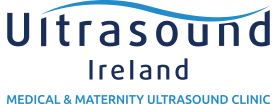Q: How early can you detect and hear a heartbeat?
Q: How early can you detect and hear a heartbeat?
You’re on the table waiting for your doctor to find the baby’s heartbeat. Whether it takes five seconds or a few minutes, chances are you’re going to be breaking out in a sweat. Hearing that thunderous “chug chug chug” or the sound of a “galloping horse” sound is music to the ears for many new parents but you have to be a few months on before you can hear it that way. In the early days the baby is much too small and mobile to find the tiny heart without viewing it on an ultrasound.
With ultrasound you can see the heart beat as early as 6 weeks gestation and hear it safely as early as 10 weeks gestation. Many factors can attribute to how early you can hear your baby’s heartbeat. Positioning of the foetus, weight of the mother, and time can all factor in on how early you will be able to hear the heartbeat.
At around 18 to 20 weeks or sometimes sooner your baby’s heart beat should be able to be heard with a stethoscope at your doctor’s office. This still remains to be one of the most exciting moments in pregnancy…..hearing your baby’s heartbeat.
When you hear your baby’s heartbeat, there’s a lot more going on then the soothing sounds of a healthy baby. Your doctor is most likely calculating the rate of beats to ensure the pregnancy is going well. A normal range can be anywhere over 100 beats a minute to as fast as 180! While this seems like a lot, don’t be alarmed by the fast thumping. When it comes to an unborn babies heartbeat, fast is good. If you are concerned, or just keen on hearing the sweet sound, you can purchase a home foetal Doppler which will allow you to hear what is going on from the comfort of your own home.
For more information about our pregnancy ultrasound scansor other services contact us today: 01 210 0232 | info@ultrasound.ie
References
1. Ji, E. K., Pretorius, D. H., Newton, R., Uyan, K., Hull, A. D., Hollenbach, K. &
Nelson, T. R. 2005. Effects of ultrasound on maternal-fetal bonding: a
comparison of two- and three-dimensional imaging. Ultrasound Obstet Gynecol,
25 (5), pp. 473-7.
2. Timor-Tritsch, I. E. & Platt, L. D. 2002. Three-dimensional ultrasound experience in
obstetrics. Curr Opin Obstet Gynecol, 14 (6), pp. 569-75.
3. Johnson, D. D., Pretorius, D. H., Budorick, N. E., Jones, M. C., Lou, K. V., James, G.
M. & Nelson, T. R. 2000. Fetal lip and primary palate: three-dimensional versus
two-dimensional US. Radiology, 217 (1), pp. 236-9.
4. Chmait, R., Pretorius, D., Jones, M., Hull, A., James, G., Nelson, T. & Moore, T. 2002.
Prenatal evaluation of facial clefts with two-dimensional and adjunctive three-
dimensional ultrasonography: a prospective trial. Am J Obstet Gynecol, 187 (4),
pp. 946-9.
Disclaimer
All of the content and articles on our blog and website are intended for informational purposes only. Please do not consider any of the information provided here as a substitute for medical advice. At all times seek medical advice directly with your own doctor and medical team.
